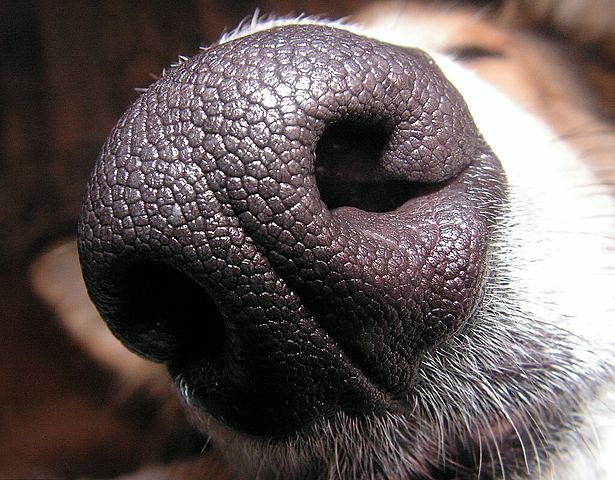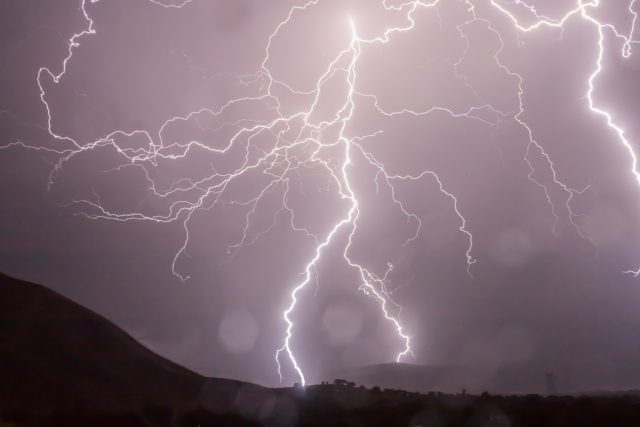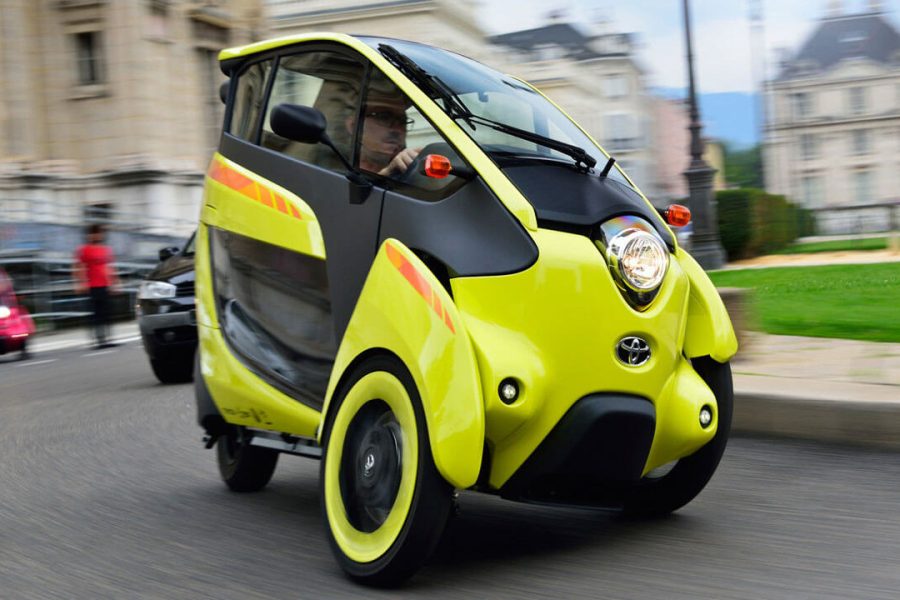They're man's best friend, but how many people know what makes their dogs tick? Probably not many, that's how many. And given that their behavior is largely geared toward communication—with us, no less—we should keep our tails between our legs.
Here are 10 things you've seen your dog do but have no idea why.
10. Chasing cats

Contrary to popular belief, dogs don't hate cats. After all, they're perfectly capable of running a household. So why do they pursue them so aggressively?
The reason is your dog's hunting instinct. Some breeds, especially shepherds and hunters , such as German Shepherds and Golden Retrievers, chase cats more than others. But even toys instinctively chase moving objects — be it a ball, a stick, or a cat. And unlike balls and sticks, cats instinctively run away, which, of course, makes the situation worse.
In addition, there is a difference between cats and dogs language barrier While a dog wags its tail to show willingness to interact, a cat usually wags when annoyed. In other words, Catese for "Go away" is Doggian for "Want to play?" Consequently, dogs have been chasing cats for thousands of years.
9. Out of breath

Have you ever wondered why your dog is panting, even when he's just sitting still? Most of the time, they're not panting, they're usually just hot or dehydrated. Dogs don't sweat like we do (thank goodness), so they pant, to cool down What happens is that they quickly suck in air and humidify it before exhaling, so that it evaporates from the nose and lungs, cooling the body from the inside.
Apparently, they need plenty of air and access to water for this process. So dogs can die within minutes from heatstroke if left in hot cars, even with the windows open. They simply don't have enough air.
However, this is not the only reason for suffocation. Depending on the context It can also indicate anxiety, stress, or pain. Sometimes it is a side effect of medication. It can also indicate a toxic or allergic reaction. It is important to be aware of all the possible causes so you know when your dog is in danger.
8. Lick you

When your dog licks you, it's usually a greeting. Nothing mysterious about it. But if that's all, why don't dogs lick each other instead of sniffing their butts right away?
That's because it's puppy behavior. In the wild, when a mother returns to her puppies from hunting, her dependents lick her face, prompting her to vomit some food . This is basically what you are to your dog, a mother for life. Providing for all their needs, we encourage continuous puppyhood . This persistence of juvenile behavior into adulthood is called "neoteny." Another example is the voice of domesticated dogs (e.g. puppies) compared to dogs in the wild.
Keep this in mind if you don’t like licking. Punishing a dog for licking your face is cold and confusing. The best thing to do is let them do it. But if you really don’t like it, try covering your face instead and rewarding them when they lick your hand. Or teach them an alternative greeting.
7. Digging (including indoors)

Dogs dig holes for a variety of reasons, not just to hide bones. like their pre-domesticated ancestors .
One of the main reasons is their lair instinct . On the outside, the hole protected them from the cold and cooled them down in the heat. This is also the reason why you may see your dog scratching as if he were digging indoors, especially on his bed. Another reason, especially if your dog was bred to hunt, is the instinct to catch prey (like gophers) in holes.
Another reason, however, is stress relief. Separation anxiety is common in dogs, and if they are left alone in the yard all day, they often channel that stress into digging. This keeps them busy, like OCD . At least until you get home and don't scold them for behavior you don't understand.
6. Eating grass

It is common knowledge that dogs eat grass , when they want to vomit. You may have seen your own dog chewing the lawn until he vomits yellow foam. This is bile that accumulates overnight and irritates the stomach when it is empty. The solution is a small dinner.
But that's not the only reason dogs eat grass, or even the main reason. In fact, according to the study , only 22 percent eat grass until they vomit, and only nine percent appear sick before they start to feel sick. Clearly, something else is going on.
Besides boredom, the main reason dogs eat grass appears to be a dietary deficiency. Grass contains a number of vitamins, minerals, and nutrients that they may not get from food, but that their once-wild bodies instinctively crave. It has been suggested that fiber is a big factor.
5. They tilt their head towards you

When dogs tilt their heads, you can almost hear them "A?" Scooby-Doo. . That's true (assuming they don't have any health issues). Head tilting usually just means dogs have heard something they don't understand but want to hear. For many breeds, their ears compensate. Dachshunds, for example, can tilt their heads to expose their ear canal.
But there's probably more to it than that. After all, hearing isn't exactly a handicap for dogs; it's one of the ways they're better than us. So what we see when they tilt their heads may actually be superhearing in action. According to some experts , dogs tilt their heads to triangulate the source of the sound.
Obviously, this doesn't explain why they tilt their heads at us. Unfortunately, it's not entirely clear. However, it may have something to do with their vision, with the tilt of their head, compensating for the muzzle This may be why bulldogs and other short-nosed breeds bow their heads less than others. It may also be that you have unwittingly encouraged this cute behavior in your dog in the past, encouraging him to do it more often.
4. Hide from the storm

All dog owners know the stress of thunderstorms. Suddenly, it seems like your happy-go-lucky best friend needs some serious advice, especially if storms are rare where you live. They're also likely to be more afraid if their first 14 weeks of life (their socialization window) are overbeyond storm season Going crazy doesn't help either.
Interestingly, however, it is not just about noise. First of all, it's static electricity , which runs through the fur and causes discomfort. In fact, it can even cause shock.
This is why they hide. It’s not to avoid some invisible threat; it’s to ground themselves and minimize static electricity. Knowing this, we can help by, for example, directing them to a good grounding spot or wiping their fur with an unscented towel to dry. However, it’s important not to be too overbearing, as your dog is already nervous.
3. Moon walk after your business

We’ve all seen it, that strange ritualistic habit of scratching the ground with their hind paws after they’ve done their business. To the uninitiated, it looks like an instinct to bury their business, hiding their tracks from other dogs. But it’s actually the other way around. Dogs’ toe pads are one of the few places on their bodies with sweat glands, so by wiping them on the ground, they’re intentionally leaving their scent behind. Meanwhile, digging with their claws at the same time leaves a clear visual mark that other dogs can find. The bigger the mark, the more impressive the dog is, so they with such pleasure "sign their art" .
You see, for dogs, toileting is a social occasion; every input is packed with information. You might want to keep that in mind the next time you catch them eating poop. Not only is this behavior learned from their mother , they communicate with the neighbor's dog who left him. (At least, the risk is minimal , and it may even provide nutritional value.)
Dogs sniff urine for the same reason: to gather information. In fact, a puddle of urine is so rich in data that while dogs typically fail the traditional self-awareness test (such as placing them in front of a mirror with a mark on their body to see if they try to shake it off), they can easily identify your own urine .
2. Wagging the tail

We learn this in preschool: dogs wag their tails when they're happy. But as you've probably learned since then, it's actually not that simple. Dogs wag their tails when they're happy, but they wag their tails for other reasons, too — positive and negative. So all that can be said is that your dog is something reports . And maybe you want to learn to translate.
It depends on the speed and position. According to PetMD , a slightly upright tail wagging at a moderate speed, is the dog's "I'm happy" sign. As it gets faster and faster, turning into what's called a "helicopter tail," it's telling you they're very excited. No surprises there. But did you know that when the tail is arched over the back, it indicates aggression? In this case, the speed of the wag is a measure of how much the dog wants to bite you.
There is also an important difference between wagging left or wagging right. No matter what breed your dog is; when their tail wags slightly to the left, it means they are anxious, and when it wags slightly to the right, it means they are friendly. And as pseudoscientific as this may sound, it has been widely studied, especially in the context of left-right asymmetry in the brain.
1. Walking in circles before lying down

The conventional wisdom about why dogs circle their bed, or the couch, or the floor, or wherever they are going to rest, is that they are scanning the horizon for threats. Another common theory is that they are scaring away vermin and pests. But according to research, the explanation is actually quite simple: they are trampling down uneven surfaces. Animal psychologist Professor Stanley Coren has found that dogs in three times more often circling on the uneven ground.
But why then do we also see dogs walking in circles before doing their business outside? Scanning the horizon, right? Nope. Oddly enough, research shows that dogs clearly prefer to poop according to the Earth's magnetic field - at least during the fifth day, when it is stable. In particular, they like north-south alignment and avoid east-west.
Researchers aren't sure why. It may just be better for dogs. Other animals, including birds and cows , also attach themselves to the planet's magnetic field. Whatever the reason, it seems fair to assume that it also comes into play when they circle for a rest.














Оставить Комментарий